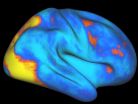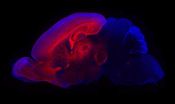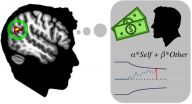(Press-News.org) PHILADELPHIA, PA - July 15, 2015 - Obstructive Sleep Apnea (OSA) remains under-recognized in hospitalized patients, despite being associated with cardiovascular complications and sudden death. A multi-disciplinary group of researchers and physicians at Thomas Jefferson University and Hospitals have created a clinical pathway, or screening process, to identify the disorder in higher-risk, hospitalized patients and recently published the results in the Journal of Clinical Sleep Medicine.
"The results showed that our screening process identified sleep disordered breathing in 87 percent of patients who followed up with a polysomnography," said first author Sunil Sharma, M.D., F.A.A.S.M., Associate Professor of Pulmonary Medicine in the Sidney Kimmel Medical College at Thomas Jefferson University. "We confirmed the high prevalence of undetected sleep disordered breathing among hospitalized patients and also validated a low-cost protocol to detect it."
The researchers piloted the program in patients admitted to the hospital under cardiology, internal medicine and family medicine. Those patients with a body mass index over 30, a known risk factor for sleep apnea, were automatically screened with the Snoring, Tiredness during daytime, Observed apnea, high blood Pressure (STOP) Questionnaire.
If the patient screened positive, they received a formal sleep consult during their hospital stay and underwent overnight pulse-oximetry testing, which assessed the patient's oxygen desaturation index (ODI). The researchers hypothesized that patients who were positive on the STOP questionnaire and experienced a high oxygen desaturation during the night, might be experiencing sleep apnea.
Patients with a high ODI were recommended to undergo overnight polysomnography as an outpatient. Of those who followed up with the recommended polysomnography (n=149), 87 percent (n=129) were diagnosed with sleep disordered breathing. The authors were able to show that overnight pulse-oximetry, a simple low-cost device used in hospitalized settings, co-relates well with polysomnography.
Interestingly, the authors also noted an increasing number of direct sleep medicine consult requests after implementing the program, suggesting that the new screening process increased awareness among admitting physicians and house staff.
"Sleep disordered breathing is associated with cardiovascular complications and sudden death," Dr. Sharma said. "This study should be of great interest to hospitals looking at ways to reduce complications. Recent data suggests that for inpatients with cardiovascular disorders, early diagnosis and intervention for sleep apnea may lead to reduced readmission rates."
INFORMATION:
The authors report no conflicts of interest in the writing of this manuscript and no external financial support was provided.
Article Reference: Sharma S, et al. Obstructive sleep apnea in obese hospitalized patients: a single center experience. J Clin Sleep Med 2015;11(7):717-723.
About Jefferson -- Health is all we do.
Our newly formed organization, Jefferson, encompasses Jefferson Health and Thomas Jefferson University, representing our clinical and academic entities. Together, the people of Jefferson, 19,000 strong, provide the highest-quality, compassionate clinical care for patients, educate the health professionals of tomorrow, and discover new treatments and therapies that will define the future of health care.
Jefferson Health comprises five hospitals, 13 outpatient and urgent care centers, as well as physician practices and everywhere we deliver care throughout the city and suburbs across Philadelphia, Montgomery and Bucks Counties in Pa., and Camden County in New Jersey. Together, these facilities serve more than 78,000 inpatients, 238,000 emergency patients and 1.7 million outpatient visits annually. Thomas Jefferson University Hospital is the largest freestanding academic medical center in Philadelphia. Abington Hospital is the largest community teaching hospital in Montgomery or Bucks counties. Other hospitals include Jefferson Hospital for Neuroscience in Center City Philadelphia; Methodist Hospital in South Philadelphia; and Abington-Lansdale Hospital in Hatfield Township.
Thomas Jefferson University enrolls more than 3,900 future physicians, scientists, nurses and healthcare professionals in the Sidney Kimmel Medical College (SKMC); Jefferson Schools of Health Professions, Nursing, Pharmacy, Population Health; and the Graduate School of Biomedical Sciences, and is home of the National Cancer Institute (NCI)-designated Sidney Kimmel Cancer Center.
For more information and a complete listing of Jefferson services and locations, visit http://www.jefferson.edu.
New York, NY, July 15, 2015--Researchers at Columbia University Medical Center (CUMC) have found that key parts of the human brain network that give us the power to control and redirect our attention--a core cognitive ability--may be unique to humans. The research, which was published in the July 13 online edition of the Proceedings of the National Academy of Sciences, suggests that the network may have evolved in response to increasingly complex social cues.
"The human brain is powerful, but even it cannot make sense of the entire sum of stimuli that bombard our senses," ...
ROSEMONT, Ill.--Patients who received rehabilitation instructions via video teleconference, or "telerehabilitation," following total knee replacement (TKR) surgery had comparable outcomes to patients who received in-person physical therapy, according to a study appearing in the July 15 issue of The Journal of Bone & Joint Surgery (JBJS).
"This study is the first to provide strong evidence for use of telerehabilitation as an alternative to conventional face-to-face care following total knee replacement surgery," said Hélène Moffet, PhD, lead study author, physical ...
JUPITER, FL, July 15, 2015 - As early as 1943, when autism was first described by psychiatrist Leo Kanner, reports were made that some, but not all, children with autism spectrum disorder have relatively enlarged heads. But even today, more than half a century later, the exact cause of this early abnormal growth of the head and brain has remained unclear.
Now, scientists from the Florida campus of The Scripps Research Institute (TSRI) have uncovered how mutations in a specific autism risk gene alter the basic trajectory of early brain development in animal models.
The ...
Montreal, July 15, 2015 - A Canadian research team at the IRCM in Montreal, led by molecular virologist Eric A. Cohen, PhD, made a significant discovery on how HIV escapes the body's antiviral responses. The team uncovered how an HIV viral protein known as Vpu tricks the immune system by using its own regulatory process to evade the host's first line of defence. This breakthrough was published yesterday in the scientific journal PLOS Pathogens and will be presented at the upcoming IAS 2015 conference in Vancouver. The findings pave the way for future HIV prevention or cure ...
BOSTON - New research led by investigators at Beth Israel Deaconess Medical Center (BIDMC) provides the first direct evidence linking traumatic brain injury to Alzheimer's disease and chronic traumatic encephalopathy (CTE) -- and offers the potential for early intervention to prevent the development of these debilitating neurodegenerative diseases. TBI can result from repetitive contact sport injuries or from exposure to military blasts, and is one of the most significant risk factors for both Alzheimer's disease and CTE.
In a study published today in the online edition ...
Scientists at the University of Basel were able to identify for the first time a molecule responsible for the absorption of starlight in space: the positively charged Buckminsterfullerene, or so-called football molecule. Their results have been published in the current issue of Nature.
Almost 100 years ago, astronomers discovered that the spectrum of star light arrived on earth with dark gaps, so-called interstellar bands. Ever since, researchers have been trying to find out which type of matter in space absorbs the light and is responsible for these "diffuse interstellar ...
About 1 in 88 children has an autism spectrum disorder. This represents a 78% increase in the incidence of autism spectrum disorder since 2002 (although some of the increase may be due to improved diagnostic capabilities). Individuals with an autism spectrum disorder may have poor nutrition because they often exhibit selective eating patterns as well as sensory sensitivity that predispose them to restrict their diets.
The July 2015 issue of Advances in Nutrition, the international review journal of the American Society for Nutrition, features "Nutritional Status of ...
GeoSpace
Greenland's fjords are far deeper than previously thought, and glaciers will melt faster, researchers find
West Greenland's fjords are vastly deeper than rudimentary models have shown and intruding ocean water can badly undercut glacier faces. A new study in Geophysical Research Letters explores how this process will raise sea levels faster than expected.
Eos.org
A University-Government Partnership for Oceanographic Research
After 44 years of coordinating the U.S. academic research fleet and facilities, the University-National Oceanographic Laboratory System ...
CORVALLIS, Ore. - Air pollution controls installed at an Oregon coal-fired power plant to curb mercury emissions are unexpectedly reducing another class of harmful emissions as well, an Oregon State University study has found.
Portland General Electric added emission control systems at its generating plant in Boardman, Oregon, in 2011 to capture and remove mercury from the exhaust.
Before-and-after measurements by a team of OSU scientists found that concentrations of two major groups of air pollutants went down by 40 and 72 percent, respectively, after the plant was ...
A new computational model of how the brain makes altruistic choices is able to predict when a person will act generously in a scenario involving the sacrifice of money. The work, led by California Institute of Technology scientists and, appearing July 15 in the journal Neuron, also helps explain why being generous sometimes feels so difficult.
The reason people act altruistically is well contested among academics. Some argue that people are innately selfish and the only way to override our greedy tendencies is to exercise self-control. Others are more positive, believing ...



